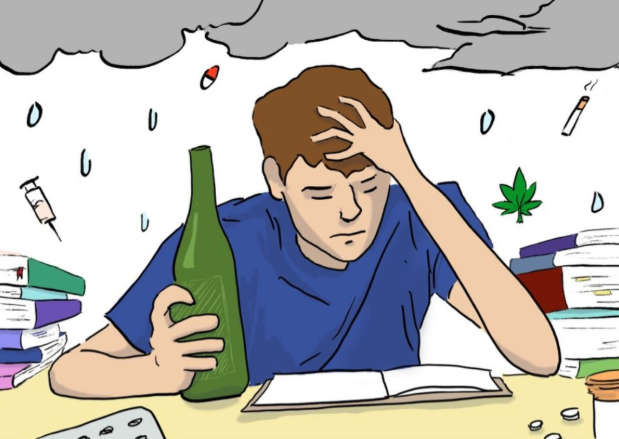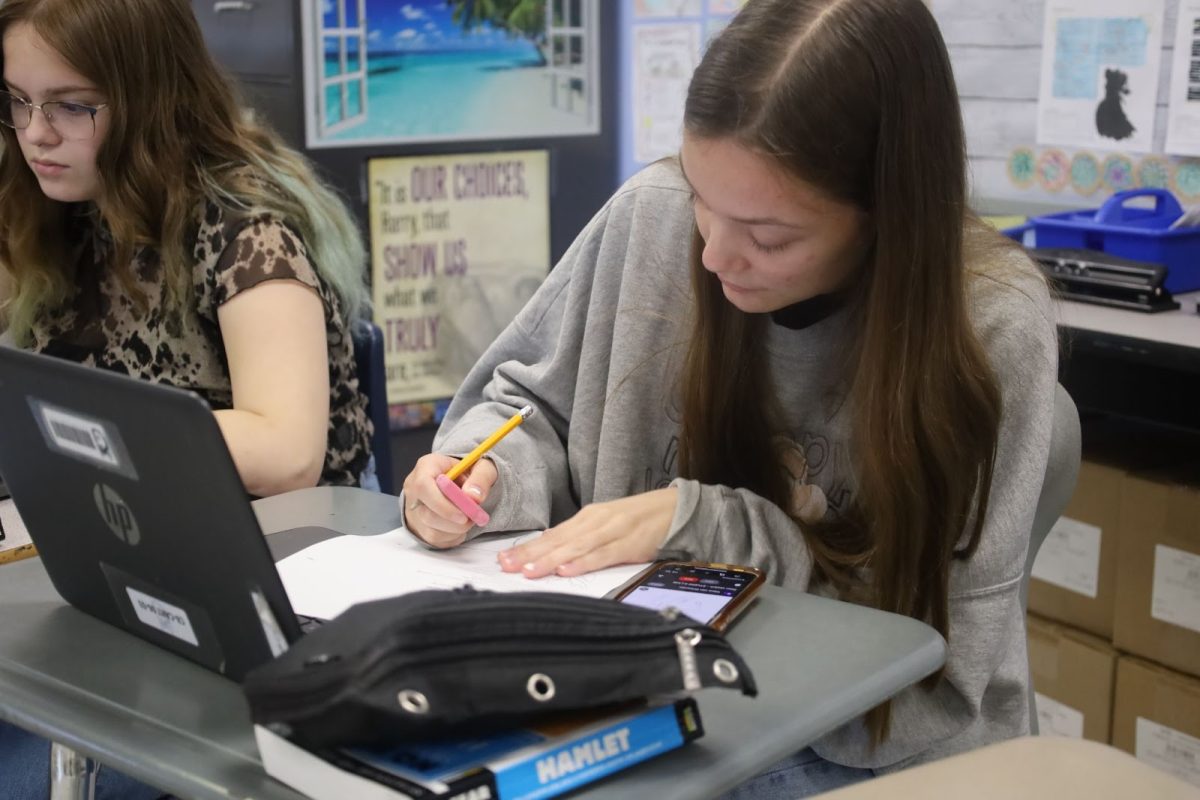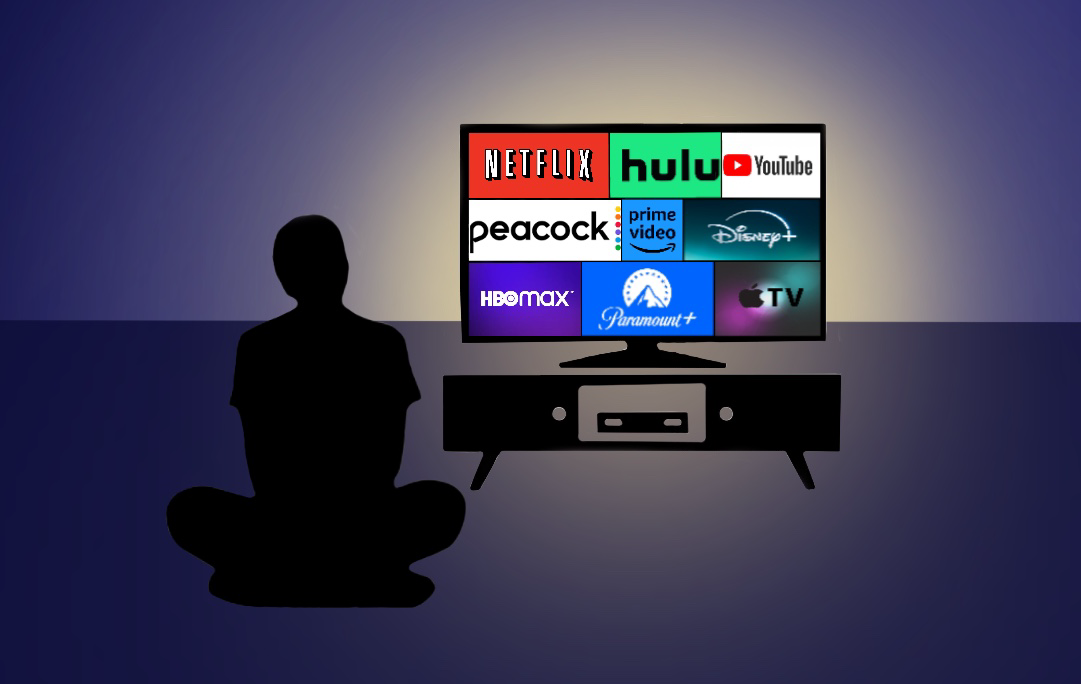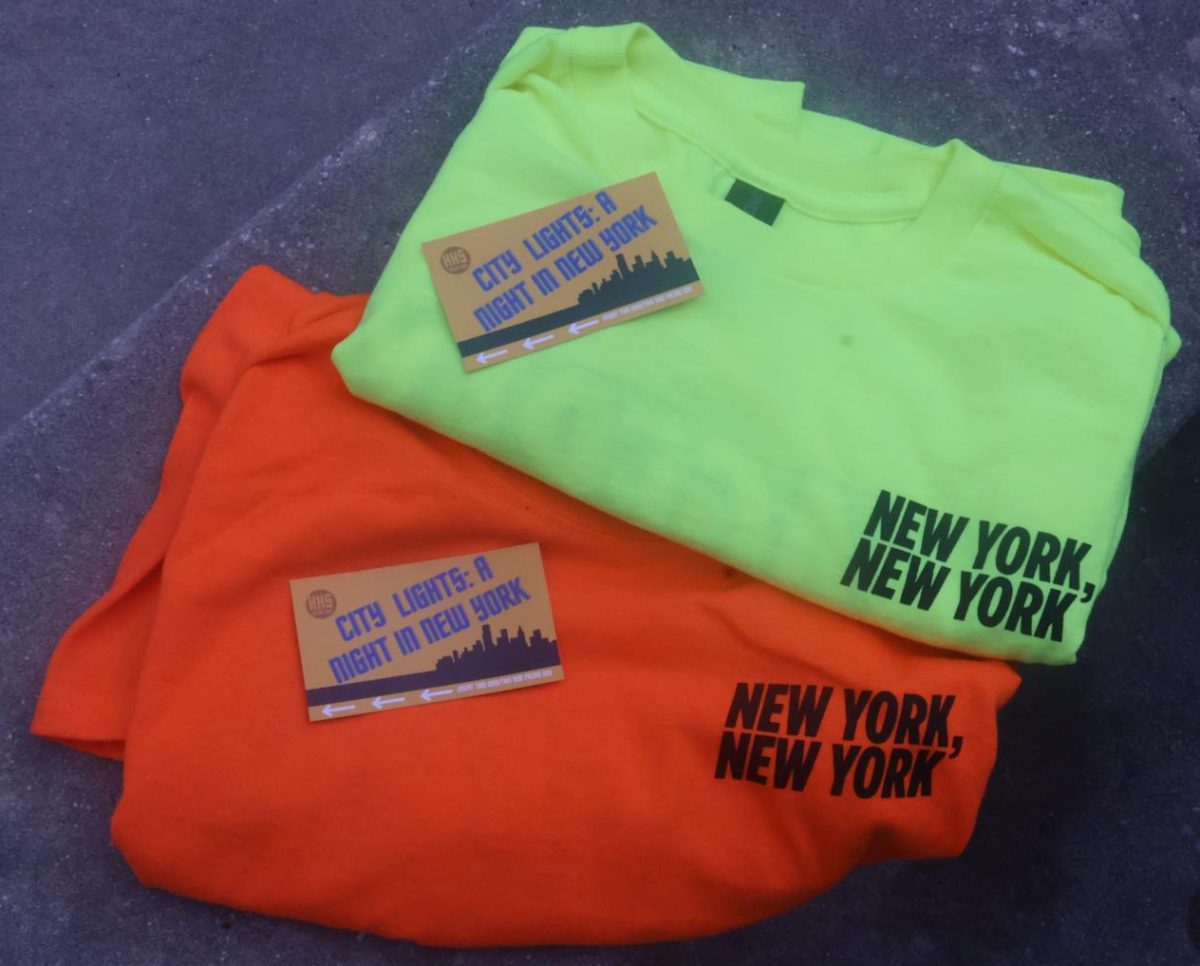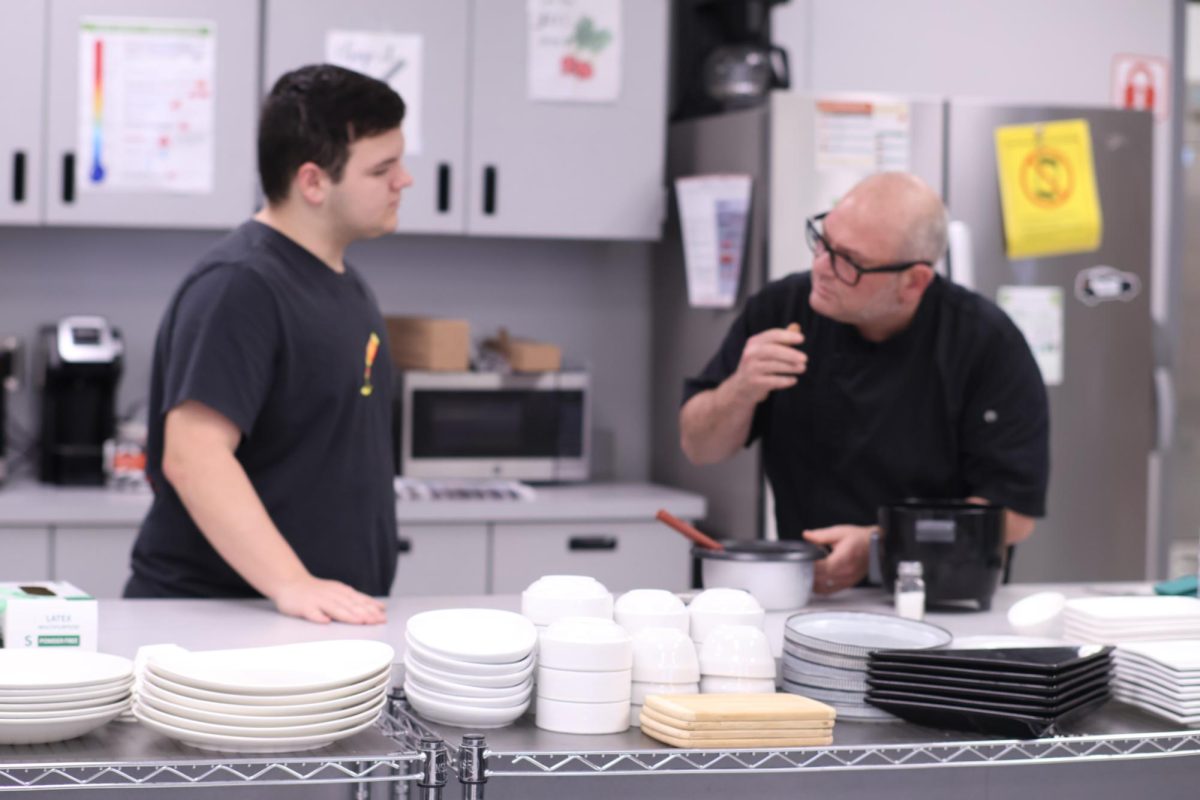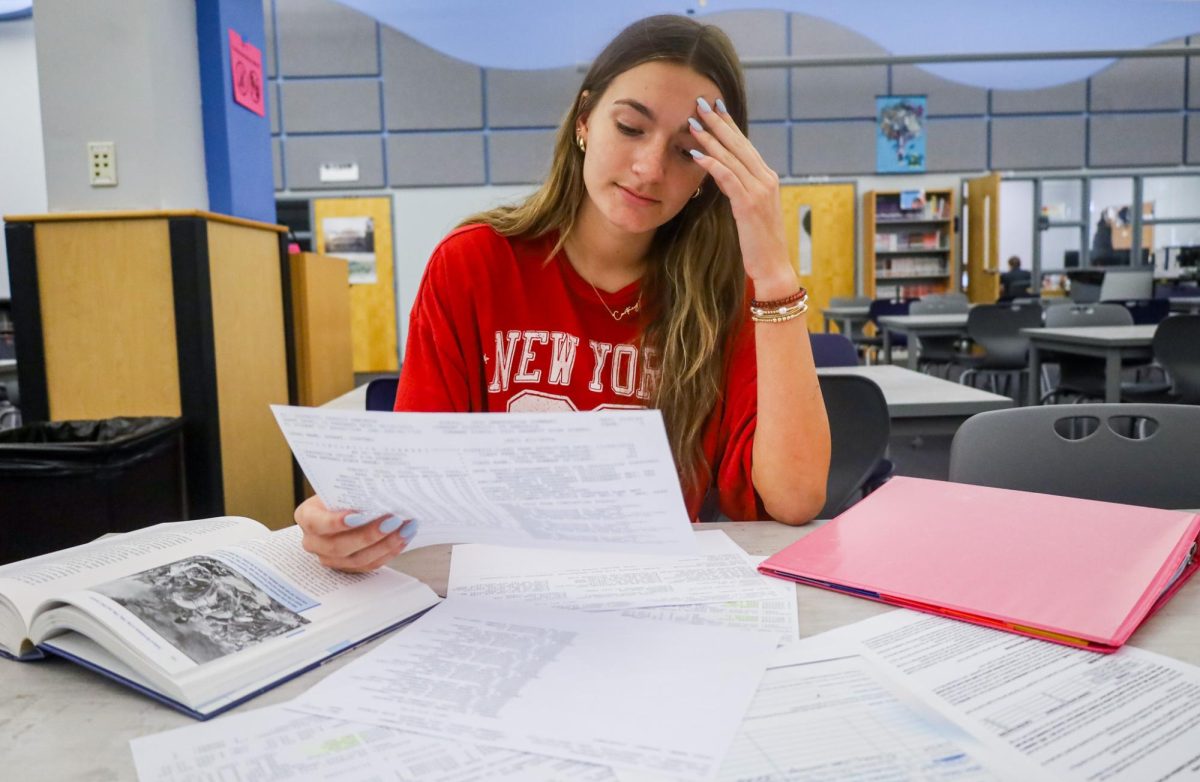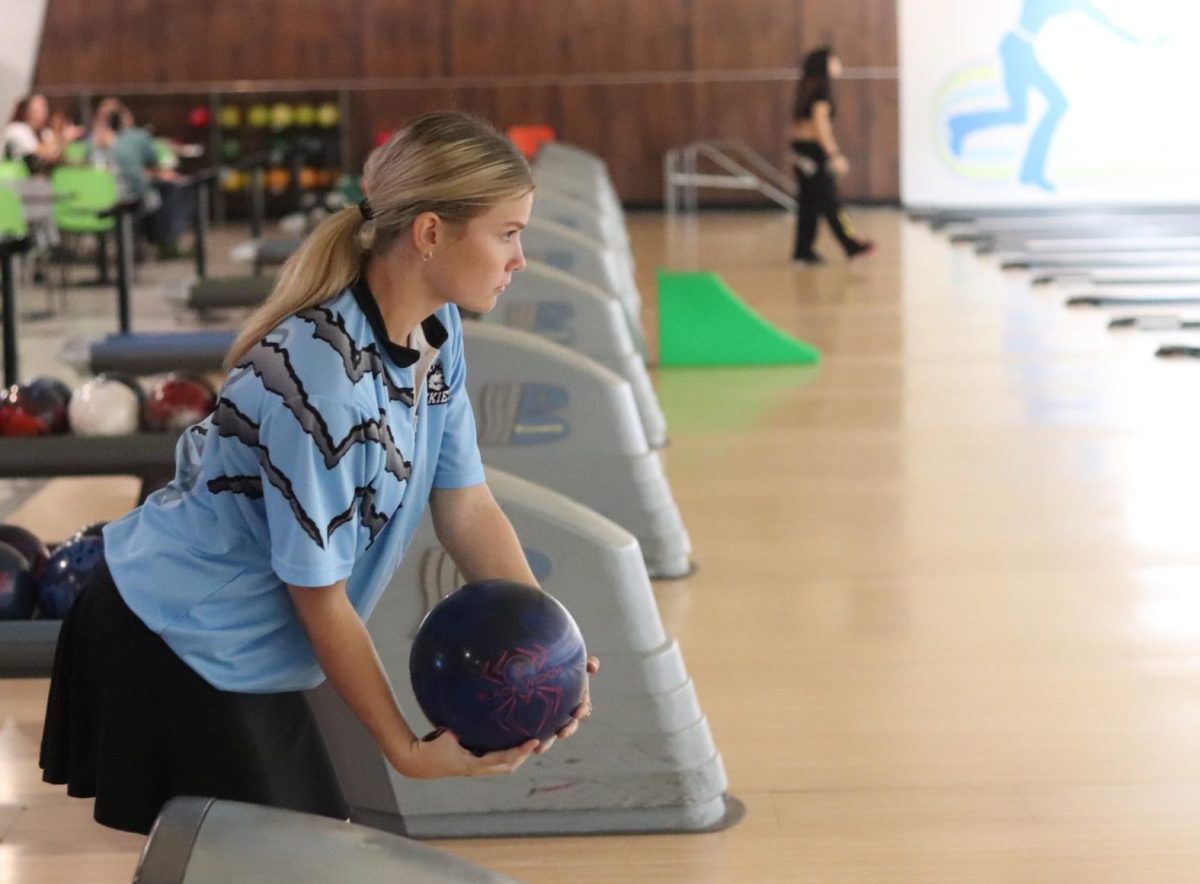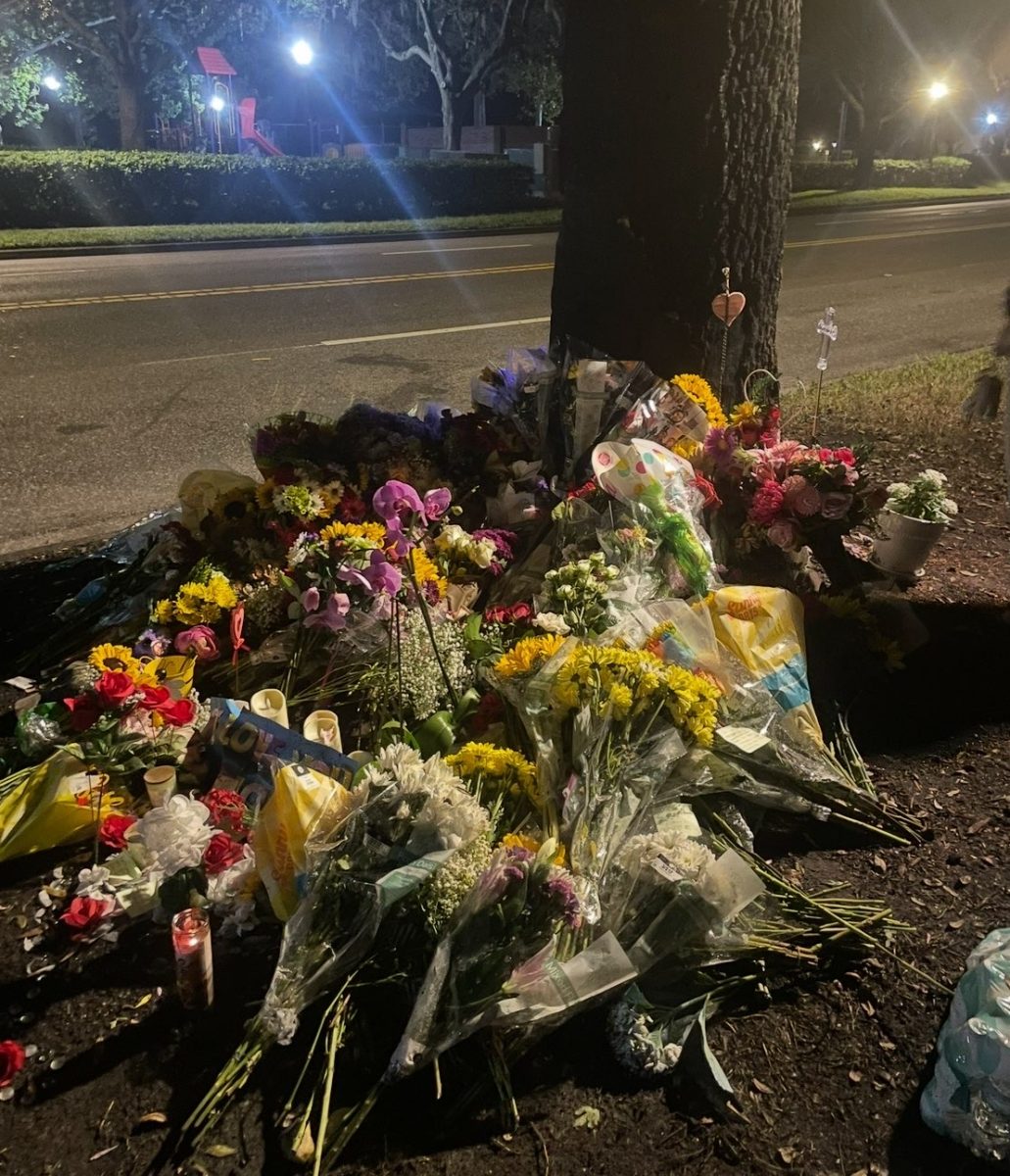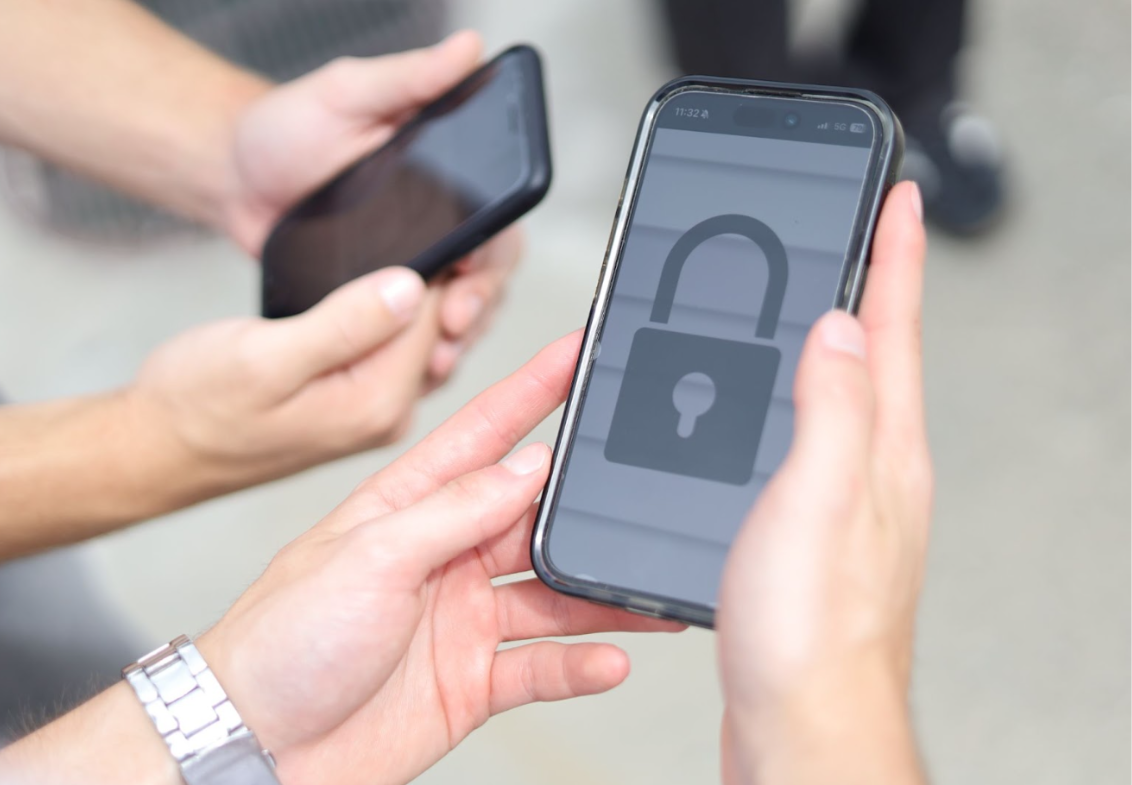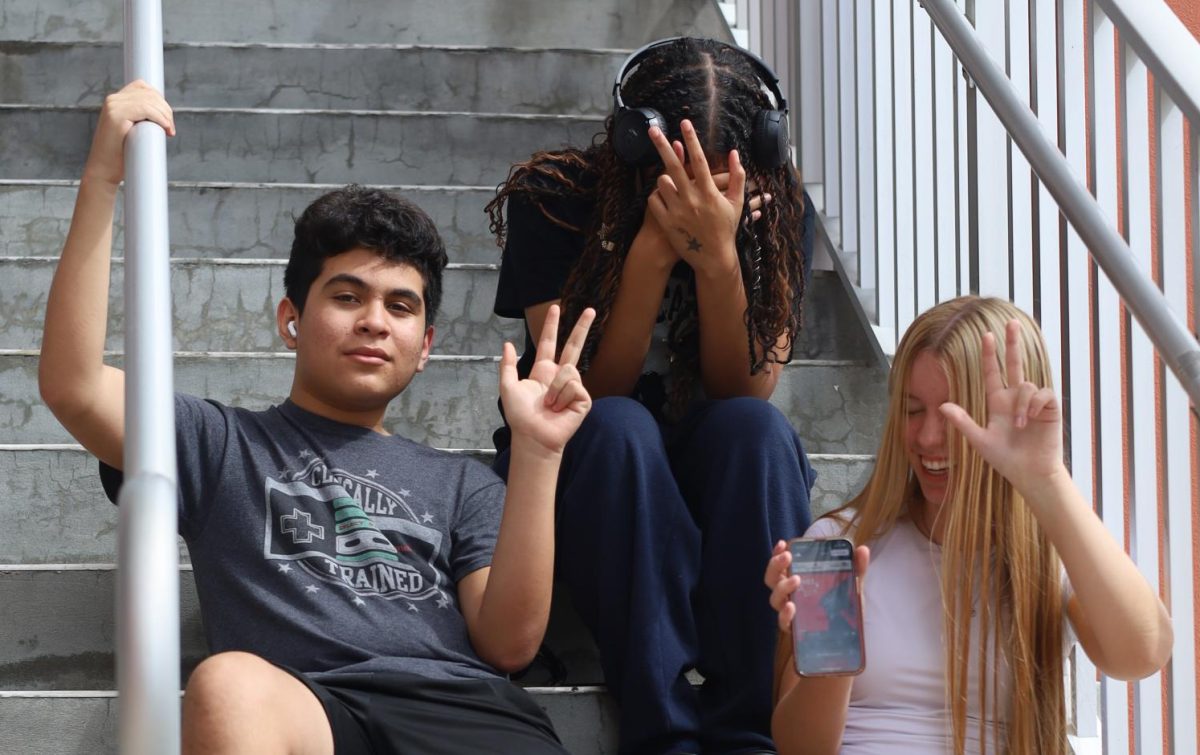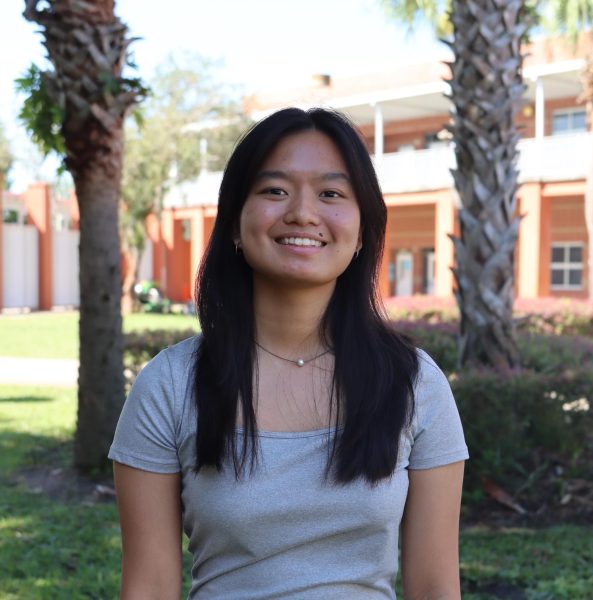WARNING: This story discusses topics of drug abuse and addiction that may be distressing. If you or anyone you know is struggling with mental or substance abuse issues, the confidential and free National HelpLine, 1-800-662-HELP (4357), is available 24/7.
Hagerty High School, the BluePrint staff, and the writers in no way condone drug use.
Lyrics like “Percocet, molly percocet,” and “I did half a xan 13 hours ‘til I land,” are often sung without a second thought. While Future and Drake may not be the direct cause of student drug abuse, mental health certainly is.
Mental health has been at the forefront of the national discourse causing Florida to implement required mental health courses in all 6-12 schools in the 2019-20 school year. These mental issues usually go hand and hand with student drug abuse. A 2016 study of 10,000 adolescents by Journal of the American Academy of Child and Adolescent Psychiatry revealed that two-thirds of teens that developed a substance abuse disorder had experienced at least one mental illness. Many students who abuse alcohol, illicit drugs, and prescription pills do so as a coping mechanism to deal with the stresses of teenage life.
Reasons for use and links to mental health
ADHD (attention deficit hyperactivity disorder), anxiety and depression are some of the most common mental illnesses among adolescents. These are often treated with prescription drugs, however those who are diagnosed with these disorders often self-medicate with illegal drugs and alcohol.
“I think anxiety is one of the main reasons [teenagers abuse drugs]. A lot of students have some sort of trauma or negative experience from their past and they’re using drugs or alcohol to try and cope with that pain,” mental health counselor James Bartlett said. “The reason why [drugs] are used so often as a coping mechanism is because they’re effective, in the moment. The problem is it doesn’t work at the underlying issue.”
Many students begin to use it casually with friends, not expecting to be trapped by addiction. Some are able to balance school, work, and life, others fall into a deep hole and become dependent on substances.
“I say Xanax helps anxiety, and it makes me feel less self conscious, like I’m not thinking about what I look like,” Josh* said.
According to a University of Michigan study, 64% of parents say their child is self conscious about some aspect of their appearance. Students use drugs to help with negative self image and to feel more comfortable in their own skin. Some use cannabis or more illicit substances to try and suppress this, the industry of prescription drugs, which raked in $50 billion in the first half of the year, can play a part as well. These substances are used legally and controlled at first, but can quickly spiral into misuse.
Bartlett believes that prescription medication along with the proper therapy and counseling can help students who genuinely need it if abuse is avoided.
“Some people have a traumatic experience that spikes anxiety and they need something to help them in the moment until they can work through that in therapy. There are people who are on medication for their whole life—everybody is different,” Bartlett said.
While some students take doctor prescribed medication as needed, others experiment with illicit substances to cope. A study showed that teens with ADHD are 50% more likely to develop cannabis use disorder. Some students with ADHD are more hyperactive while others are more inattentive, this affects their reasons for use or even what drug they choose to abuse, some want to slow down while others want to speed up.
“Their mind is moving constantly all the time, all these things are going through their head and it’s very overwhelming. Now imagine you have ADHD primarily hyperactive and you have anxiety or you have PTSD, all those things can cause someone to use something to calm down,” Bartlett said. “Now you’ll have those students who are primarily inattentive, they may take a substance to help focus like a stimulant.
Commonly abused substances
Stimulants, opioids and benzodiazepines are three of the most commonly abused types of drugs along with marijuana and alcohol. Stimulants are often prescribed to help those with ADHD and include medications such as Adderall and Ritalin. Illegal drugs like cocaine and methamphetamines are also found in this category. Stimulants increase alertness in the user and are often referred to as “uppers.”
Opioids is a blanket term for all drugs derived from the poppy plant (opiates) and synthetically created drugs that don’t come from the poppy plant but mimic the effects. Prescription painkillers like oxycodone (percocet), codeine (often found in syrup form and poured into soda), hydrocodone and fentanyl are all examples of opioids. Heroin also falls in this category. Opioids cause the user to feel intense euphoria, blissfulness and pain relief. They are one of the most addictive types of drugs and are considered a public health epidemic with 224 people dying each day from opioids in 2022.
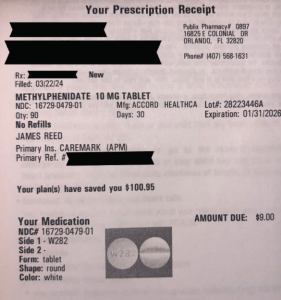
Benzodiazepines are often prescribed for anxiety as well as muscle spasms and seizures. When abused they produce a feeling of sedation and reduced inhibition. Alprazolam (Xanax) is the most common drug in this category, often being glorified in pop culture. Withdrawal can result in seizures and even death.
While marijuana and alcohol are often seen as less taboo and more socially accepted, there is still potential for abuse and addiction. Alcoholism can cause damage to the liver and withdrawals can result in seizures. Marijuana is a central nervous system depressant. There have never been any reported deaths from marijuana however frequent abuse can result in cannabis use disorder. Some may experience panic attacks or nausea after smoking/taking too much. This is often referred to as “greening out.”
While marijuana use can turn into an addiction, some students praise its medicinal properties while still understanding its negative effects.
“I used to have really bad Tourette syndrome and smoking 100 percent helps with my ticks. [Smoking marijuana] definitely doesn’t help me in school though, I think it negatively affects my motivation,” Josh* said.
First experience
Abuse doesn’t start as an addiction—most are casually introduced to it before it spirals out of control. Josh* first became involved with marijuana after being offered it by a friend.
“I ended up with him and we smoked some roaches (essentially the butt of a cigarette for marijuana), that his mom left,” Josh* said. “What made me want to start harder drugs is definitely people downplaying the effects of them and saying that, ‘Oh, it’s not as bad as you made think like, it’s really not that crazy,’ when, in reality, when you get addicted to it, it’s a whole other world.”
Michael* had a very similar introduction to Josh*. They both cited friends and peer pressure as reasons for first trying marijuana.
“When I was 14 I was hanging out with these kids who always smoked and then, I spent the night over his crib. He had weed, and he’s peer pressuring me when I really didn’t want to do it, but he was just like, do it. So I did it,” Michael* said.
Once casual use fades away and addiction takes hold it can be incredibly detrimental to almost every aspect of the users life. Addiction is a cycle of suffering that many recreational users feel that they will never fall into, but it can happen to anyone.
“If you’re sober, stay sober. The addiction is terrible,” Josh* said.
Not everyone will be affected the same way after trying cannabis. Some may seek more intense highs while others may be content with just marijuana.
“You’re going to have people who just love marijuana, and some of them will stay just on that, but there are some people who say ‘Hey, I need something harder’ because it’s not taking the edge off like it used to,” resource officer Milton Gil said. “It’s a gateway drug for some people, for others it’s not.”
A loved one’s perspective
When a drug habit deepens, it doesn’t just affect the user, it affects those close to them. Often family and friends are left feeling guilty, overwhelmed, and unsure about what to do or how to help. Julia* is a Hagerty student whose boyfriend suffered from substance use issues.
“I always felt it was my responsibility to take care of him or prevent him from hurting himself,” Julia* said. “I felt unsure what to do all the time. Calling someone felt selfish but I knew I was not capable of providing the help he needed. I’ve also never been someone who used [drugs] so his experiences were very foreign to me and hard to understand.”
It can be hard to identify someone who is struggling with addiction and even harder to find ways to help. Addicts often hide their addictions from loved ones and feel ashamed about their drug habit leading to further emotional decline.
“I didn’t know [about his addiction] for quite some time but once I found out I did try to confront him about it many times. Each time he would normally have an excuse about why his mental health or upbringing was a reason he used drugs,” Julia* said. “He got increasingly angry with me when I approached him about it.”
Identifying signs of addiction is crucial for getting an addict the help that they need whether it be professional help or personal support.
“One of the main signs is distancing themselves from friends and family very suddenly. Another thing is not caring about goals and aspirations they previously had. Your highest priority should be making sure they feel comfortable telling you about their addiction,” Julia* said. “Also make sure you seek professional help. Lastly, be compassionate, if the user feels nobody is there for them it worsens the problem.”
Addiction can leave mental scars on those close to an addict. These scars can negatively affect an addict’s partner well after the relationship has ended.
“This experience made me afraid to date for a very long time. I felt some guilt for about a year about entering a new relationship,” Julia* said. “I’m in a much better place now and do advocacy work with addiction victims.”
While addicts are often looked down upon by society, it is important to remember that they are real people with real struggles, not just statistics seen in the news. Addiction does not discriminate. Anyone can become an addict, not just “bad kids.”
“He is a very sweet individual and a hard worker who isn’t defined by his addiction,” Julia* said.
Rehabilitation efforts
Professional help such as rehabilitation facilities and therapy can help students to heal mentally and overcome substance use disorder. These measures are not always effective, however, as 40-60% of patients relapse after being released from rehab.
“I got sent there for weed. I got caught in school, and then I got sent to Journeys [Academy]. I told my parents I was going to stop, and I never did. So then they just sent me to rehab,” Michael* said. “Honestly, I didn’t want to go, like, the first month. I was just, like, refusing help, refusing anything. Then I realized, like, I might as well learn from it because I’m here.”
Rehab facilities are designed to get patients’ minds off the underlying issues that cause substance abuse and help them find healthy ways to cope with those issues and offer therapy in one-on-one and group settings. Addiction is often a byproduct of mental health disorders or personal struggles, rehab facilities hope to help heal the wound that led them to drugs, not just put a band-aid on it.
“I stayed there. I slept there for 60 days. You wake up, get ready, change, eat breakfast, then you go to class for two hours, like virtual classes and then you would go to a therapy session, and then we would talk about whatever the therapists want to talk about,” Michael* said.
Discipline and long term effects
Schools have to balance discipline with guidance in order to properly help students with substance use disorders. Unless a student is posing a danger to others, is repeatedly caught with paraphernalia, or is selling illicit drugs, it is usually treated as a learning experience and not a legal consequence.
“Obviously, there’s a discipline component, because, depending on what you have on campus there are certain parameters that we have to do discipline within, but it’s also about making sure that we could support the kid and making sure they get the help they need,” principal Robert Frasca said. “In today’s world, we have so many resources and people who are better equipped to help and try to break that cycle.”
Substances can have consequences beyond school and the law. Heart, liver and lung issues are common side effects of substance abuse that can be severely harmful. Abuse can also exacerbate pre-existing conditions. It’s also possible that drug abuse can lead to potentially more mental health struggles such as depression, memory loss, and personality disorders.
And, of course, abuse of these substances can be fatal. Between 2019 and 2021, drug-related deaths increased 109% in teens.
“There’s always an alternative. Yes, drugs could be an easy out, but it’s not a free out. Then there’s gonna be a price to pay,” Gil said.

